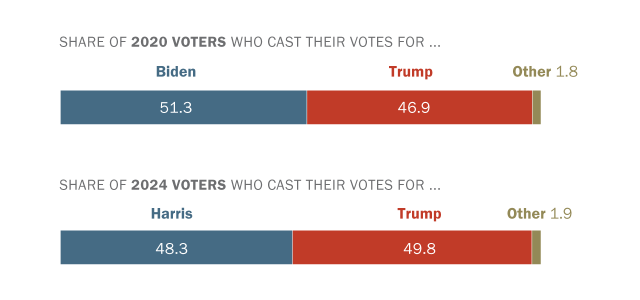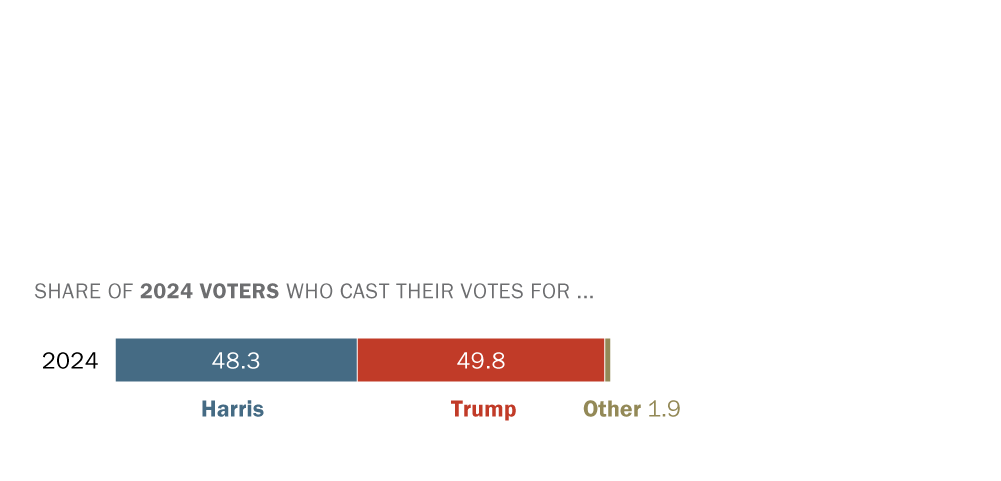How Changes in Turnout and Vote Choice Powered Trump’s Victory in 2024
Recent presidential elections have featured a lot of continuity. In a politically polarized America, the vast majority of voters stick with the same party from election to election.
But in a closely divided country, modest shifts have meant that control of the presidency has swung back and forth between Republicans and Democrats. Joe Biden won the 2020 election by 4.4 percentage points. Four years later, Donald Trump won by 1.5 points.

This roughly 6-point swing in the popular vote margin was the result of people changing something about their behavior between 2020 and 2024. To uncover the movement, we need to be able to see how individuals changed over time.
Pew Research Center’s American Trends Panel includes about 9,000 voting-eligible adults. By cross-referencing official voting records, we were able to verify whether they voted in recent elections. Those who voted were asked how they voted, and nonvoters were asked which candidate they preferred.
Panel data like this lets us track the same people over time, which allows us to separate people who voted for the same party’s candidate in both years from three kinds of changers:
- Switchers (people who switch their vote from one party’s candidate to another’s)
- Drop-offs (those who voted in 2020 but didn’t in 2024)
- New and returning voters (those who voted in 2024 but did not vote in 2020).
Let’s see what happened.

Donald Trump won the popular vote in 2024 by a margin of 1.5 percentage points, receiving 49.8% of the vote to Kamala Harris’ 48.3%.
Four years earlier, Biden defeated Trump by 51.3% to 46.9%. What accounted for the different outcomes?
To fully answer that question, there’s one more group to consider: In both elections, more than a third of the eligible electorate did not vote.
Looking at all Americans who were eligible to vote in 2024, nearly one-quarter were changers who did something different in 2024 than in 2020: Some switched their vote (switchers), some stayed home after voting in 2020 (drop-offs), and others turned out in 2024 after not voting in 2020 (new and returning voters).
In 2024, Trump held on to most of those who backed him in 2020: 85% of his 2020 voters voted for him again in 2024. But 3% switched to Harris and 11% dropped off – they didn’t vote at all in 2024.
Harris retained a smaller share of Biden’s voters: 79%. Another 15% of Biden’s voters dropped off in 2024, and 5% switched and voted for Trump.
Another factor that helped Trump: new and returning voters – including those who were too young to vote in 2020. A little more than a quarter of those who did not vote in 2020 turned out in 2024. Trump won somewhat more of those voters than Harris did.
Each group of changers – the switchers, who switched their vote from one party’s candidate to another’s …
… the new and returning voters, who voted in 2024 but not in 2020 …
… and the drop-offs, who voted in 2020 but didn’t in 2024 …
contributed a small part of the change between elections.
For more information on who voted in the 2024 presidential election and how they voted, read “Behind Trump’s 2024 Victory, a More Racially and Ethnically Diverse Voter Coalition.”